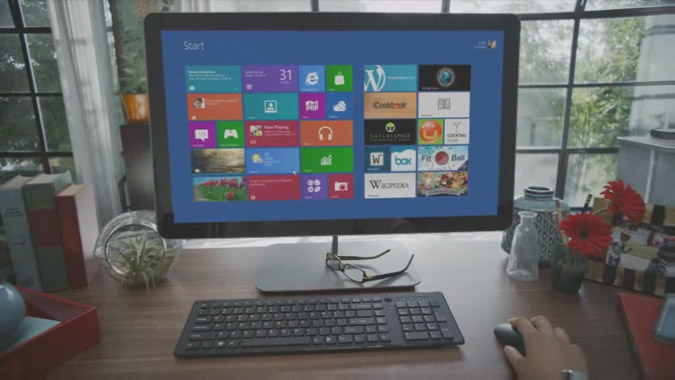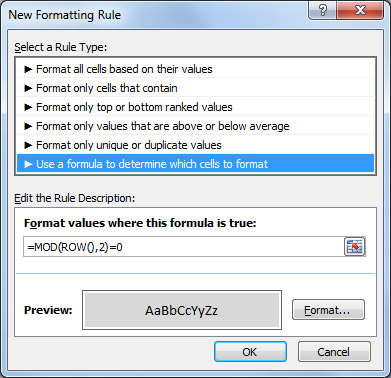Applying PRINCE2® to smaller projects can be difficult because it was originally designed to cope with the larger, more encompassing side of Project Management.
As such, when undertaking smaller projects, some Project Managers have a tendency to disregard PRINCE2 principles and take a more holistic approach. More often than not, this will be of detriment to the overall success of the project, as regardless of size it is still important to adhere to accepted processes within Project Management.
On our PRINCE2 training courses, our trainers go out of their way to make sure that everyone learns how to tailor PRINCE2 to their own project environment.

The 2009 'refresh' of PRINCE2 sought to give scope for the tailoring of PRINCE2 processes to projects of various sizes. As such, in this post we will discuss how to adapt key aspects of PRINCE2 to apply to small-scale projects and why this is so important. But first we'll discuss the way in which you shouldn't be managing small-projects.
Andy Trainer
13 Nov 2012
‘Health and safety gone mad’; that well-worn phrase that's nearly as high up on the Daily Mail’s list of go-to headlines as ‘x gives you cancer’. People love to point to supposed incidents of over the top safety regulations as evidence of a growing nanny state culture in Britain.
In reality, these stories that make the headlines tend to be exaggerated at best and are just plain made-up at worst.

Even these guys have to wear hard-hats sometimes
Whilst some might seem quite funny, it is a serious issue that has badly damaged the reputation of Health and Safety as a concept. People believe these myths to be fact and then begin to view Health and Safety as over the top. This leads to people ignoring health and safety regulations on the whole, which results in an increase in serious injuries and deaths that could have otherwise been prevented.
As such the HSE is committed to disproving these wild claims in order to maintain the necessary regard for Health and Safety overall. Each month they choose a different myth and set out to prove that it has no actual basis in fact.
In that vein, we thought we'd come up with 5 of our favourites that the HSE has managed to disprove.
Need to learn or brush up on your Health and Safety regulations? Our Health and Safety courses are accredited by IOSH, the world's biggest health and safety membership organisation.
Andy Trainer
9 Nov 2012
Scope creep is a project manager's nightmare, which makes it an important part of our Introduction to Project Management course. In this post, our PRINCE2 and project management trainer Claudine gives a brief oversight of scope creep and how to manage it.

Firstly let’s clarify what scope is. It is the boundaries of what will be included or excluded from your project. For example:
- Features or functionality of a product
- Information or data included or excluded
- Organisations or stakeholders
- Procedures or processes
Managing scope creep is easier when using an established project management methodology like PRINCE2, which goes some way to explain why PRINCE2 Practitioner training is one of our most popular courses!
Why is it important to define scope?
One of the biggest gripes project managers have is of the “moving goal posts” or scope creep. This involves a large number of additions or changes to the requirements of a project, resulting in timescales and budgets to be exceeded. In addition, it also becomes difficult to plan and resource a project that is in a constant state of flux and transformation.
So it is important that scope is managed correctly so that the project manager is able to deliver a product within their objectives of time, cost, quality, scope, risk and benefit.
by Claudine
6 Nov 2012
Tonight sees the return of BBC's Young Apprentice with twelve teenagers jostling to prove they can make it in the business world in spite of their youth and inexperience.
In the past we've explained how Agile works best on the Young Apprentice and also examined why Jane McEvoy got fired. This year we ask; which project management skills come naturally, and which need to be learnt through training and experience?

As Young Apprentice often focuses on the project managing abilities of each contestant, we thought it would be worth thinking about the project management skills that the young contestants on the show are likely to have, as well as what skills it would be useful for them to build up.
Andy Trainer
1 Nov 2012
If Windows 8 proves to be as popular and widely adopted as Windows 7, it could be huge for apps and responsive web design, taking the formats from mobile to a mainstream desktop market.

The booming mobile industry (dominated by iOS and Android) has seen apps go mainstream in the last few years. It has also prompted a radical change in web design with a desire for responsive design that adapts to browser size.
However, the number of websites with responsive design is still minuscule, and apps are still mostly for personal use on mobile devices. True synchronicity between desktop and mobile, (and between work and home) is still a long way off.
Windows 8 could be the catalyst to take app development and responsive design from mobile to desktop.
Stay ahead of the curve with our range of mobile development courses. We run Android App courses for native app developers as well as our highly popular mobile web week workshopwhich includes a day on responsive web design.
Windows 8 Apps
Sorry developers, it looks like you're going to have to learn to make apps for Windows 8 on top of Android and iOS.
Taking Apple's latest OSX update a step further, Microsoft have unveiled an operating system to work on all devices, desktop and mobile, by focusing on apps. They're a bit late to the party, with Apple have had an App store on desktop for a long time. But despite Apple's break into the market, Windows is still by far the global operating system of choice, particularly in workplaces.
Like Apple's App Store and Google Play, Microsoft is launching its own closed app marketplace and this is expected to become the norm for downloading software as it's often seen as 'safer' than downloading straight off the web, and easier than going into a shop and buying a disk.
Aaron Charlie
25 Oct 2012
There is more to Excel than you realise
In this post I share three of my favourite Excel tips that - once you know how - become very useful. Most people who use Excel have only just scratched the surface, if you take the time to learn more about Excel, you could really achieve a lot more at work and at home. Learning Excel is time consuming, and a near impossible task to do on your own. We provide regular Excel resources and tips on the blog, but nothing beats hands-on, classroom based Excel training.

Here are three Excel tips that come in handy once you know what you're doing:
How to Shade Every Other Row
When you have a long list of data that stretches across the page it can sometime be difficult to read each line precisely across. One way to help you, and your eyes, is to make every other row a different colour.

- Highlight all the rows you want to make easier to read
- Click Conditional Formatting in the 'Styles' section of the ribbon
- Select New Rule > Use a formula to determine which cells to format
- In the box marked 'Format values where this formula is true enter the formula =MOD(ROW(),2)=0
- Click on the 'Format' box to apply your desired styling to every other line.
- For simple shading, click on the 'Fill' tab and click on the lightest grey.
- Apply the conditional formatting and your spreadsheet should now be nice and stripy, and more importantly - easy to read:

Andy Trainer
19 Oct 2012
On Sunday 14th October, Felix Baumgartner jumped out of a balloon 24 miles above the planet, breaking the speed of sound and a few world records to boot. It was an impressive feat, pushing the human body to new limits and showing what people are capable of achieving.
Watch the jump!
Not loading? Click here to watch on YouTube.
Red Bull Stratos was a collaborative event, with the previous record holder for sky diving - 84 year old Joe Kittinger - guiding Felix from the ground, a whole team supporting and organising the jump, and just a bit of help from the sponsor Red Bull. It was also what I believe to be the first truly global social media event. Read on to find out what I mean by that...

If you want to find out more about the jump itself, head to the Red Bull Stratos website or the BBC where it's proving quite a popular subject today, claiming 4 out the top 5 most shared stories:

Want to publicise events like Red Bull? We offer tailored social media training packages. Combine our social media, content marketing and WordPress courses to learn how to build a website and create and marketing content using social media.
Craig Charley
15 Oct 2012
Once you have gained your PRINCE2 Practitioner qualification, or attended Intro to Project Management training and started working on projects, you should be considering the different ways to keep projects running smoothly. One of these is configuration management.
The term configuration management conjures up all sorts of questions for project managers, firstly;
- What is configuration management?
- Do I need it?
- How do I apply it?
What is Configuration Management?
Whether we realise it or not, configuration management exists all around us. For example, the make and model of your car or phone, the version of software you use at home or at work and the documents you use in your daily lives could be version controlled.
Essentially what configuration management covers is how we identify things that need to be version controlled, track these items by keeping records, using naming or labelling the latest versions and control the items by getting approval and ensuring that master copies are kept safe.
Do I Need It?
![]()
You mean there's a better way to organise paperwork?
In a project environment, you will at the very least be generating a large amount of paperwork that as a minimum you will need to manage by configuration management.
Have you ever experienced that situation in a meeting when glancing across at a colleague's collection of paperwork, you notice that they have a later or earlier version of the documentation you have?
If configuration were being managed in your project environment, this situation should not happen.
Ideally, you would at least manage your important documentation by ensuring that approved versions are baselined (approved) and then if changes are required, a new version number is generated. This provides a useful history to review where changes were made or for comparison at the end of the project to compare to the original objectives.
In addition, some projects may also create products or deliverables that would benefit from being managed through configuration. Consider the following questions:
- How will we identify these products?
- Where will we store the products?
- What storage retrieval and security will be in place?
- Who will be responsible for configuration management?
These questions lead me onto the next big question which is:
Claudine
10 Oct 2012